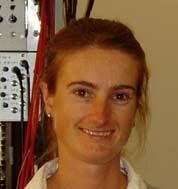
Project Summary:
The aim of this research project is to investigate the role of human motor cortex in normal physiological tremor and in a pathological condition known as ‘essential tremor’. In addition, we will investigate the role of normal physiological tremor during movement. This research will enhance our understanding of the mechanisms that contribute to physiological tremor and may provide the basis for developing interventions to improve the rehabilitation of patients with essential tremor. Essential tremor has a debilitating effect on activities of daily living and is one of the most common neurological disorders among adults affecting ~4% of individuals over the age of 40 yrs. Approximately 60% of sufferers are unemployed due to disabling shaking.
Tremor is characterised by involuntary rapid and repetitive back-and-forth movement of a body part. The phenomenon is found in healthy individuals and can also appear as a pathological symptom. From as early as 1886, electrophysiological investigations have shown that voluntary muscle contractions are accompanied by an 8-12 Hz physiological tremor. Since then, tremor has been studied under numerous conditions. This has prompted the subdivision of physiological tremor into six categories: resting tremor, action tremor, postural tremor, tremor in isometric contractions, tremor in compliant contractions, and higher amplitude tremors.
The origin of physiological tremor has been hotly debated over the past century. Five sources are thought to contribute to physiological tremor. These include motor unit discharge properties (motor units commence firing at 8-10 Hz), synchronised motor unit discharge (the discharge of different motor units can become synchronised so that they tend to fire together at a particular rhythm), mechanical resonance (the natural frequency at which a body part vibrates as the result of its intrinsic mechanical properties), activity in the muscle stretch reflex pathway, and central oscillations in brain activity. The six categories of physiological tremor involve a different contribution from central and peripheral mechanisms.
Pathological tremors can also arise through a variety of mechanisms. Pathological tremors are usually categorised on the basis of the frequency of tremor. Parkinsonian tremor and cerebellar kinetic tremor occur at a frequency of 3-6 Hz whereas essential tremor and enhanced physiological tremor occur at 6-12 Hz. Essential tremor is characterised by an abnormally large action tremor and postural tremor that leads to tremor-related disability. The incidence of essential tremor increases with age and population studies show that ~75-90% of essential tremor sufferers are undiagnosed and untreated. Little is known about the pathophysiology of essential tremor although abnormal activation of the midbrain, cerebellum, and peripheral reflex loop has been proposed. There is no cure for essential tremor and pharmacological treatments are only effective in some patients. In the current project, we will investigate the role of human motor cortex in the generation of action tremor in healthy individuals and patients with essential tremor.
The current project involves two studies. In the first study, we will determine whether the human motor cortex is involved in the generation of action tremor and whether action tremor plays an important role in learning new motor skills in healthy individuals. In the second study, we will extend our investigation to determine the role of human motor cortex in essential tremor.



 The Brain Foundation is the largest, independent funder of brain and spinal injury research in Australia. We believe research is the pathway to recovery.
The Brain Foundation is the largest, independent funder of brain and spinal injury research in Australia. We believe research is the pathway to recovery.